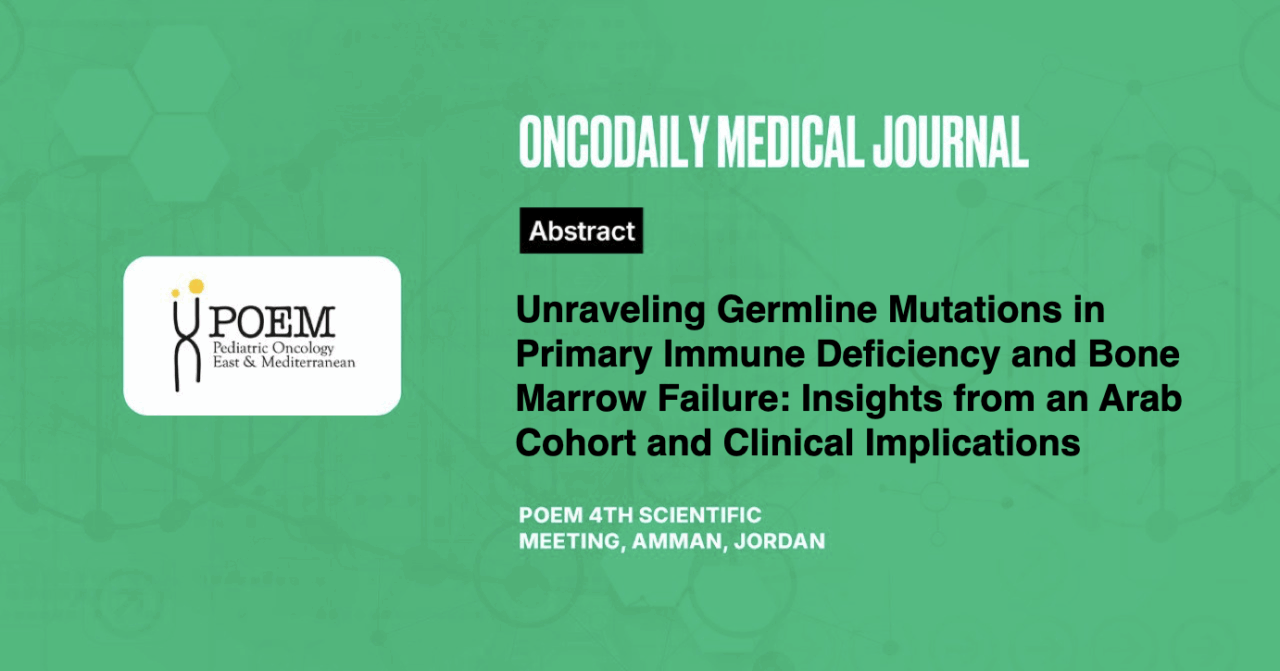Unraveling Germline Mutations in Primary Immune Deficiency and Bone Marrow Failure: Insights from an Arab Cohort and Clinical Implications
Abstract
Introduction: Primary immune deficiencies (PIDs) and inherited bone marrow failure syndromes (IBMFS) are rare genetic disorders with significant morbidity and mortality. Germline mutations play a critical role in disease pathogenesis, yet data on their prevalence and clinical implications in Arab populations remain scarce.
Methodology: We conducted a comprehensive genetic analysis of 100 patients diagnosed with PIDs and IBMFS from an Arab cohort at King Hussein Cancer Center using whole exome sequencing (WES) and targeted gene panels. Variants were classified as pathogenic, likely pathogenic, or variants of uncertain significance (VUS) following ACMG guidelines.
Results: Pathogenic or likely pathogenic variants were identified in 65% of patients, affecting genes critical to immune function and hematopoiesis, such as: CBL, FANCF, FANCA, CSF3R, ITGB2,IFNGR1,DOCK8,CD40LG, CYBA,NCF2, ALPK3, CYBB , GALE, IL2RG, IL7R, FANCD2, DCLRE1C, NCF2, NBEAL2, ABCG5, IL2RG, FCHO1,SBDS, RPL11, RPS19, TINF2, THPO, STAT2, RAG1, RIPK1, RAG2, STAT1, RPL5, RAB27A, PRF1, RPS19, STXBP2, PIK3CD, STXBP2, RPS19, RFXANK, RPL35A.
Notably, 28% of patients harbored VUS, with several recurrent novel variants specific to the cohort such as: ADA2, CYBB,LYST, IL2RA, DOCK8, CASP10, JAK3, IFNGR1, IL2RG,JAK3, ERCC6L2,CTC1, ACD, WAS,TUBB1,CBL, STX11,XIAP, TBXAS1, PARN,MYSM1,RTEL1,VPS13B,RMRP. Importantly, actionable mutations were identified in 45% of cases, guiding treatment decisions including hematopoietic stem cell transplantation (HSCT). Family genetic counseling was offered, revealing a high rate of consanguinity (67%), emphasizing the need for early screening in at-risk relatives.
Conclusion: Genetic characterization of PIDs and IBMFS in Arab populations is crucial for personalized treatment strategies. Early genetic diagnosis facilitates curative interventions, optimizes HSCT planning, and enables informed reproductive counseling, ultimately improving patient outcomes. Future studies should focus on functional validation of VUS to improve classification and clinical actionability.





